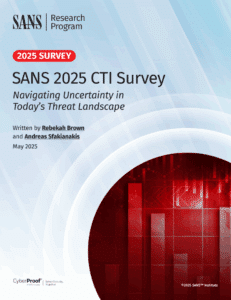Cybersecurity has become an essential business priority as threats continue to evolve in complexity and scale. One of the most powerful tools helping organizations stay ahead of these threats is the MITRE ATT&CK framework. Standing for Adversarial Tactics, Techniques, and Common Knowledge, the MITRE ATT&CK framework is an openly accessible, living document that catalogs real-world adversary behavior. For those seeking robust mitre att&ck security practices, this framework offers an invaluable blueprint.
In this article, we’ll break down the core of MITRE ATT&CK, explore how attackers use it as a mirror of your defenses, and explain three smart ways to apply the framework to strengthen your cybersecurity strategy.
What is MITRE ATT&CK?
Developed and maintained by the MITRE Corporation, the ATT&CK framework provides a comprehensive matrix of adversary tactics and techniques based on real-world observations. It’s used globally by security teams to:
- Identify gaps in security visibility.
- Improve detection and response capabilities.
- Inform threat intelligence strategies.
- Prioritize security investments.
Each adversarial behavior is categorized into 14 tactics, including initial access, privilege escalation, defense evasion, and exfiltration. Beneath each tactic are specific techniques and sub-techniques, detailing how attackers achieve these objectives.
For example, the Execution tactic may include techniques like PowerShell execution, while Credential Access might list Brute Force or Credential Dumping as viable methods.
By understanding this structure, security teams gain a detailed view of how attacks unfold across each stage of the kill chain.
Why MITRE ATT&CK Matters in Cybersecurity?
The MITRE ATT&CK framework is not just a list—it’s a functional toolset that supports continuous improvement. Organizations can map their current defenses against the framework to:
- Identify vulnerabilities.
- Enhance threat detection.
- Align internal procedures with known attacker behaviors.
With the introduction of MITRE ATT&CK v.15, the framework now includes emerging threats like the misuse of generative AI for malicious activities, demonstrating its evolving nature and relevance in modern cybersecurity.
3 Smart Ways to Apply the MITRE ATT&CK Framework in Cybersecurity
Let’s now dive into three highly effective ways to use the MITRE ATT&CK framework to reinforce your organization’s cybersecurity posture.
1. Visualize MITRE ATT&CK Coverage in Your Environment
To utilize mitre att&ck security principles effectively, start by mapping your detection capabilities to the MITRE ATT&CK matrix. This visual representation helps you:
- Understand your defensive coverage. See which techniques are actively being monitored and which are blind spots.
- Correlate threats with actual detections. Each mapped technique allows you to drill into specific rules or alerts.
- Track threat actors’ TTPs (Tactics, Techniques, and Procedures). Know exactly how adversaries might behave in your environment.
With this approach, defenders can preemptively address detection gaps, ensuring no critical phase of an attack goes unnoticed.
Pro Tip: Many SIEM tools and security platforms like InsightIDR or Microsoft Sentinel now offer built-in MITRE ATT&CK visualization dashboards, making it easier than ever to track your defensive alignment.
2. Triage and Prioritize Security Incidents Using MITRE Filters
Security operations centers (SOCs) are flooded with alerts—many of them false positives. Using the framework, you can dramatically enhance your triage process:
- Filter by ATT&CK technique: This allows analysts to group alerts based on the adversarial methods being used.
- Contextual prioritization: See whether the tactic relates to initial access, data exfiltration, or privilege escalation. This helps prioritize based on potential business impact.
- Reduce alert fatigue: By tuning detection rules with MITRE context, analysts can reduce noise and zero in on high-risk threats.
For instance, if an alert is tied to Credential Dumping (T1003) under Credential Access, that alert may be prioritized over a lower-impact tactic like Reconnaissance.
This contextual triage not only improves efficiency but also decreases response time, a crucial KPI for modern cybersecurity teams.
3. Accelerate Mean Time to Respond (MTTR) with MITRE Insights
Quick and efficient response is key in limiting the damage from cyberattacks. MITRE ATT&CK security techniques enhance your MTTR in the following ways:
- Clear mitigation guidance: Each ATT&CK technique comes with actionable recommendations on how to respond.
- Evidence-driven decision-making: Teams can reference MITRE-provided context directly in incident investigation panels.
- Proactive defense: Leverage lessons from one attack to implement changes that prevent repeat incidents.
For example, if an attacker used Lateral Movement (T1021.002 – SMB/Windows Admin Shares), the framework will provide not only how to detect this behavior but also mitigation tips like disabling administrative shares or restricting local admin privileges.
Additionally, you can use past incident mapping to train SOC analysts and conduct internal tabletop exercises based on real adversary playbooks.
Broader Applications of MITRE ATT&CK in Cybersecurity
Beyond detection and response, MITRE ATT&CK can be applied in numerous areas of cybersecurity operations:
1. Cyber Threat Intelligence (CTI)
By aligning CTI with ATT&CK techniques and tactics, organizations gain insight into which threat groups are likely to target them and how. This helps in adjusting defenses accordingly.
2. Penetration Testing & Red Teaming
This provides a roadmap for simulating realistic attacks during pen-testing engagements. Red teams can mimic known adversarial behaviors, making tests more relevant and impactful.
3. Threat Coverage Gap Assessments
Compare your detection mechanisms with ATT&CK to identify areas of weakness and prioritize improvements.
4. SOC Training & Playbook Development
Security teams can use ATT&CK-aligned detection playbooks to standardize responses, helping junior analysts understand the bigger picture of an alert.
MITRE ATT&CK’s Structure: The 14 Core Tactics
Understanding MITRE’s structure is key to deploying it effectively. The 14 core tactics include:
- Reconnaissance
- Resource Development
- Initial Access
- Execution
- Persistence
- Privilege Escalation
- Defense Evasion
- Credential Access
- Discovery
- Lateral Movement
- Collection
- Command and Control
- Exfiltration
- Impact
Each tactic reflects a goal of the adversary and contains dozens of techniques used to achieve that goal. Mapping attacks to these phases ensures a full-lifecycle view of an incident.
Final Thoughts
In the dynamic world of cybersecurity, the MITRE ATT&CK framework stands out as a strategic compass. It’s not just a reference—it’s a battle-tested guide for defenders navigating increasingly sophisticated attacks.
By applying the framework smartly—through coverage visualization, prioritized alert triage, and fast, evidence-based response—organizations can greatly enhance their security posture.
Whether you’re in a Fortune 500 company or a growing mid-size enterprise, incorporating MITRE ATT&CK into your security operations isn’t just smart—it’s essential.
At CyberProof, we help enterprises transition into agile, cloud-first operations without sacrificing security.
While digital transformation opens new doors, it also invites new cyber risks.
FAQs
What is the MITRE ATT&CK framework?
The MITRE ATT&CK framework is a comprehensive, publicly available knowledge base of cyber adversary behaviors. It categorizes tactics, techniques, and procedures (TTPs) used by threat actors during real-world attacks, helping organizations enhance their detection, defense, and incident response strategies.
Why is MITRE ATT&CK important for cybersecurity?
MITRE ATT&CK plays a critical role in cybersecurity by offering structured insight into how attackers operate. It enables security teams to map their detection capabilities to real adversarial behavior, identify coverage gaps, and improve overall mitre att&ck security strategies.
How many tactics are included in the MITRE ATT&CK framework?
The MITRE ATT&CK framework includes 14 tactics, representing the stages of a cyberattack—from reconnaissance and initial access to exfiltration and impact. Each tactic contains multiple techniques and sub-techniques that adversaries may use to achieve their goals.
What are three smart ways to apply MITRE ATT&CK in my organization?
- Visualize MITRE ATT&CK Coverage – Map detection capabilities to techniques to identify gaps.
- Triage and Prioritize Alerts – Use ATT&CK-based filters to reduce noise and focus on high-priority threats.
- Accelerate Response Times – Leverage MITRE’s contextual insights to guide faster and more effective incident response.
How does MITRE ATT&CK help reduce false positives?
By providing detailed context for each adversarial technique, MITRE ATT&CK enables security teams to fine-tune detection rules and apply targeted filters, significantly reducing benign alerts and false positives in your mitre att&ck security systems.
Can MITRE ATT&CK be used in penetration testing?
Yes, penetration testers and red teams use the MITRE ATT&CK framework to simulate real-world adversary behaviors. This helps organizations evaluate their detection and response capabilities under realistic attack scenarios.
How does MITRE ATT&CK help in improving Mean Time to Respond (MTTR)?
The framework provides actionable mitigation strategies and deep context for each technique, allowing analysts to quickly understand, prioritize, and respond to threats—thus reducing MTTR and improving incident handling efficiency.
What’s the difference between tactics and techniques in MITRE ATT&CK?
- Tactics are the adversary’s objectives (e.g., gaining initial access).
- Techniques are the specific actions taken to achieve these objectives (e.g., spearphishing attachment).
- Each tactic has multiple techniques and sub-techniques linked to it.
Does MITRE ATT&CK support cloud environments and emerging threats?
Absolutely. The framework evolves regularly to include cloud-based attack vectors and emerging threats. The latest versions even consider techniques involving generative AI, ensuring up-to-date relevance in mitre att&ck security operations.
Is the MITRE ATT&CK framework free to use?
Yes, the MITRE ATT&CK framework is completely free and open to the public. Organizations of any size can access it to improve their cybersecurity defenses and threat detection strategies.
How do I start implementing the MITRE ATT&CK framework?
Start by assessing your current detection tools and mapping them to ATT&CK techniques. Use available dashboards (such as in SIEMs or EDR platforms) to visualize your coverage, and prioritize gaps that need mitigation or additional detection capabilities.
Can small businesses benefit from MITRE ATT&CK?
Yes, small businesses can use MITRE ATT&CK to identify critical vulnerabilities, understand attacker behavior, and apply cost-effective security controls. It’s a scalable and flexible resource for organizations of any size looking to enhance their mitre att&ck security posture.










